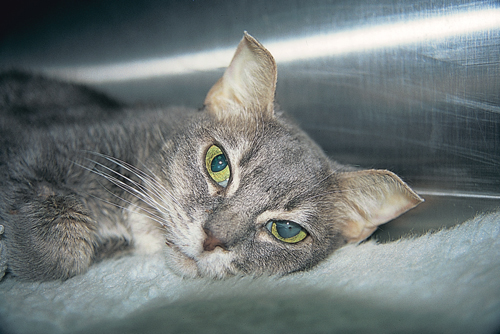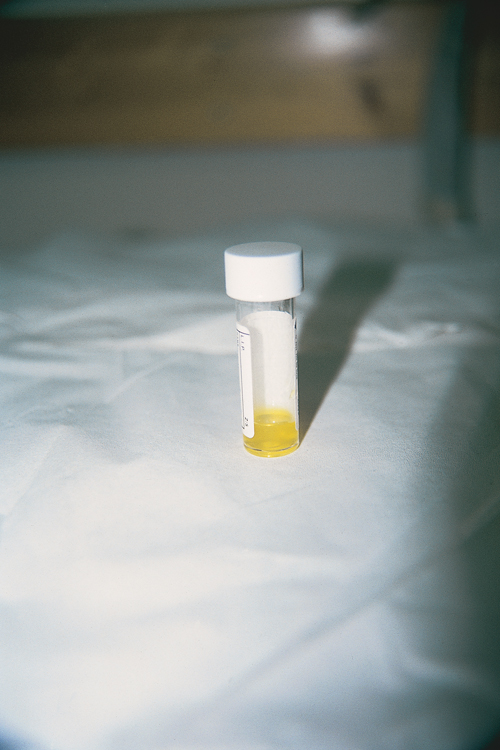Small Animal Abdominal and Metabolic Disorders Q&A 13
| This question was provided by Manson Publishing as part of the OVAL Project. See more Small Animal Abdominal and Metabolic Disorders Q&A. |
A two-year-old, female domestic shorthair cat belonged to a cattery which housed over 15 animals in separate enclosures. They were frequently rotated so that cats were in close contact with one another.
This cat was inappetent and lethargic over several days. No other cat was currently ill. This cat had anisocoria with normal pupillary light reactions in the left eye. The right pupil was widely dilated and non-responsive to light. Aqueous flare was present in the right anterior chamber and intraocular pressures were low consistent with uveitis. Chorioretinitis lesions were present on fundic examination.
The abdomen was mildly distended with a doughy feel on palpation. Abdominocentesis yielded a thick, viscous yellow fluid. On analysis the fluid was relatively acellular, containing <100 non-degenerate neutrophils, and it had a protein content of 52 g/l. Pertinent laboratory findings included a fasted serum bile acid concentration of 200 μmol/l and a hyperglobulinaemia of 63 g/l with a serum total protein concentration of 92 g/l.
| Question | Answer | Article | |
| What is your presumptive diagnosis? | In a young, ill cat with anterior uveitis, chorioretinitis, hyperglobulinaemia and a non-septic, viscous, abdominal exudate as depicted in the picture, feline infectious peritonitis (FIP) should be high on your list of differential diagnoses. Other possible causes for the presence of abdominal fluid could include portal hypertension, heart failure and cholangiohepatitis, but these disorders are not usually accompanied by ocular lesions, and such high concentrations of protein in the abdominal fluid with a low cell count is very suspicious of an FIP infection. |
Link to Article | |
| What further tests could help you make a definitive diagnosis? | Although a coronavirus titre can indicate exposure to the virus that causes FIP, other less virulent coronaviruses may also result in a positive titre. For this reason, this test is considered non-specific and only supportive of a diagnosis if the titre is greatly increased. Animals that are severely ill with active FIP infections may indeed have negative coronavirus titres since the antibodies produced are rapidly bound to the large number of circulating virus particles. This cat had a negative coronavirus titre. The finding of increased gamma immunoglobulins on electrophoresis of the abdominal fluid can also be supportive of a diagnosis of FIP, but the definitive diagnosis is based upon histopathological lesions of perivascular inflammation in affected tissues. On exploratory laparotomy a diffuse, fibrinous debris covered the surface of the liver and other viscera. Histopathology of the liver parenchyma revealed a severe, perivascular granulomatous inflammation consistent with FIP. |
Link to Article | |
| What recommendations can you make for the owner of this cattery? | Eliminating FIP infection from a cattery can be extremely difficult and frustrating. It is unknown which animals may have been infected with the virus, so it should be assumed that they have all been exposed and the cattery should be kept closed both to the addition of new animals and to the movement of animals to homes with other cats outside of the cattery. The incubation period of FIP infection may be weeks to months or even years. Due to the difficulty in interpreting coronavirus titres, it is neither necessary nor diagnostic to determine titres in these cats. Most cats that are exposed to the virus become resistant to infection and do not become ill. However, a small percentage will become clinically ill with FIP viral-induced disease, and these cats should be quarantined. Treatment of FIP is generally ineffective, and when supportive care fails, euthanasia of ill cats is indicated. |
Link to Article | |

